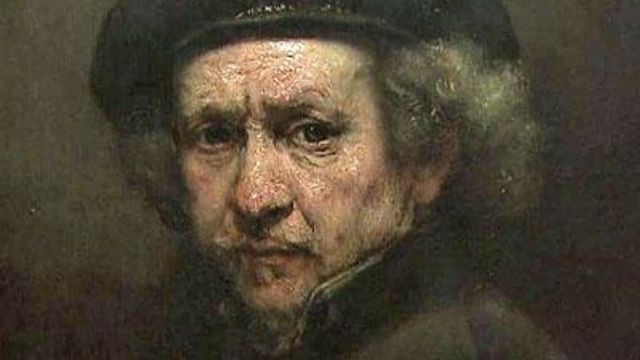RALEIGH, N.C. — The largest number of Rembrant paintings from American collections ever assembled debuts Sunday at the North Carolina Museum of Art.
The "Rembrandt in America" exhibit opened Saturday at the museum in Raleigh. It features about 50 paintings, including 27 paintings by the Dutch artist and other paintings once attributed to him but now thought to be the works of other artists.
One of the most important painters in the history of European art, Rembrandt is renowned for his ability to depict light and shadow, capture the emotions of his sitters and share historical and religious stories. He was born in 1606 in Leiden, in the Dutch Republic, now the Netherlands, and spent most of his career in Amsterdam.
"Starting in the late 19th century, when wealth moved to America, Americans began buying Rembrandts in great numbers for great amounts of cash," said Dennis Weller, curator of Northern European Art at the North Carolina museum.
People such as J. Paul Getty, Andrew Mellon and George Eastman were particularly attracted to Dutch and Flemish painters because their portraits and landscapes were more approachable than French or Italian works. And Rembrandt was the most desired by these collectors, who saw similarities between the rise of the Dutch republic and that of the United States, said Weller, a curator of the exhibit.
Their interest created nothing short of a frenzy among Rembrandt buyers. Enter William Valentiner, a curator at the Metropolitan Museum of Art in New York City before he became the first director of the North Carolina Museum of Art in 1955.
He accepted more than 700 paintings as being by Rembrandt. "At the very time that all of these new Rembrandts discoveries were coming onto the market, that's when the American collectors were on the prowl," Weller said.
Included are the two paintings at the North Carolina museum: "The Feast of Esther," now attributed to Rembrandt colleague Jan Lieven; and "Young Man with a Sword," attributed only to the circle of Rembrandt. Valentiner was among experts who authenticated both as being by Rembrandt.
Valentiner wasn't authenticating works he knew were paintings by Rembrandt's pupil's or associates; works were coming out of private and museum collections in Europe for sale, and Valentiner used techniques far less high-tech than the ones available today.
After decades of research, experts agree Rembrandt painted about 320 works.
"He was what you call an expansionist," said Walter Liedtke, curator of European paintings at the Met and a specialist in Flemish and Dutch paintings. In 1995, Liedtke curated a show titled "Rembrandt/Not Rembrandt: In the Metropolitan Museum," which showed the Met's 21 Rembrandts and 21 works previously attributed to the Dutch artist.
Valentiner was the first serious scholar of Dutch or Flemish paintings in the country, Liedtke said. "He had great merits," he said. "But he represented the extreme of a common phenomenon at the time, which was to discover paintings in the Rembrandt style and call them Rembrandts. It's not his personal fault, but he was optimistic."
For example, Valentiner thought several of the subjects in portraits were Rembrandt's family members and surmised that only Rembrandt would have painted portraits of those close to him. But later research showed that some of the sitters weren't related to Rembrandt and that his family members might have sat for students.
Even today, it's more an art rather than a science when it comes to attributing a painting to Rembrandt. Students used the same canvasses and brushes as the master, so materials don't determine what constitutes an actual Rembrandt. "It's just the quality of the execution — the intensity of the emotion expressed by the sitter, the quality of light," Weller said. "It's the way in which he defines the bone structure under the skin in the cheeks. He used color subtly. It's just something when you face these paintings that's very moving and timeless."
Authentication also requires expert agreement.
"What makes a Rembrandt a Rembrandt now in the absence of documents that tell you ... is consensus among the specialists," Liedtke said.
A signature is meaningless as Rembrandt had the right to sign any painting from his workshop and often didn't sign major works for churches, government or the powerful because everyone knew who created them. That wasn't unusual — van Dyke and Rubens also didn't sign their works, Liedtke said.
The exhibit runs from Oct. 30 to Jan. 22 at the N.C. Museum of Art. Tickets are $18 for adults, $15 for seniors and students and $12 for children ages 7 to 12.
Tickets can be purchased
online, by phone at 919-715-5923 or in person at the museum box office.
The exhibit later moves to museums in Cleveland and Minneapolis.





